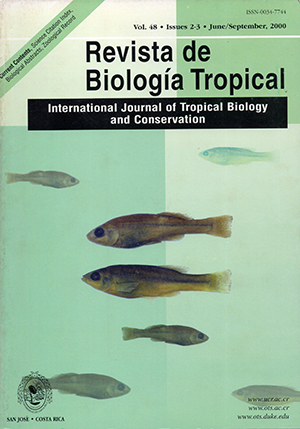Abstract
Normally, butterfly behavior and population size are studied intensively for brief periods or occasionally for long periods, not in detail for long periods, producing an incomplete view in bolh cases. How time limitation affects studies has been unknown for a long time. This paper analyses this problem based on an intensive long term study of Vanessa atalanta (L.) that covered nearly 8000 days, most of them consecutive, for 22 years (Apri1 15, 1977- Apri1 14, 1999), in a subtropical habitat near Orlando, Florida. There is no evidence Ihat ethological studies are affected by their normally brief duration (one year or less), but the analysis of yearly values hid the associations of number of individuals and arrival time with climate. In small areas, isolated population counts lasting less Ihan two weeks are not reliable, according to this study. We found no difference in number of visitors for El Niño years. The daily number of visitors was inversely correlated with temperature and precipitation, but arrival time of the first visitor was positively correlated wilh bolh. The number of visitors reaches a peak near Ihe end of Winter. The activity period span is greater Ihan in more seasonal climates. Individuals were active even at 10° C and with 9 mis winds. Individuals with fresh wing condition were most cornmon from January to June. There were 82 atypical cases of individuals arriving before 12:00 hr. Aerial interactions were seen whenever there was more Ihan one individual in Ihe site (i.e. 41 % of days, N=7634 total days). Only once in Ihese 22 years was predation seen.##plugins.facebook.comentarios##

This work is licensed under a Creative Commons Attribution 4.0 International License.
Copyright (c) 2000 Revista de Biología Tropical
Downloads
Download data is not yet available.






